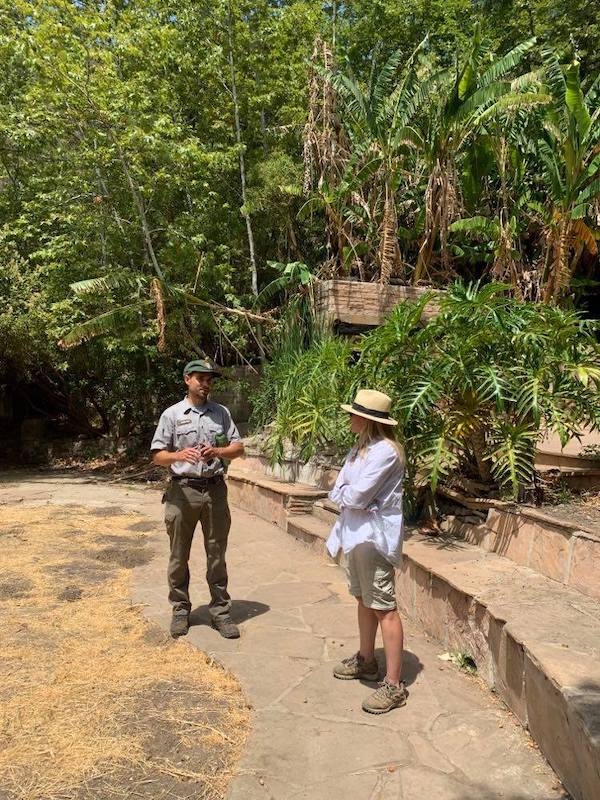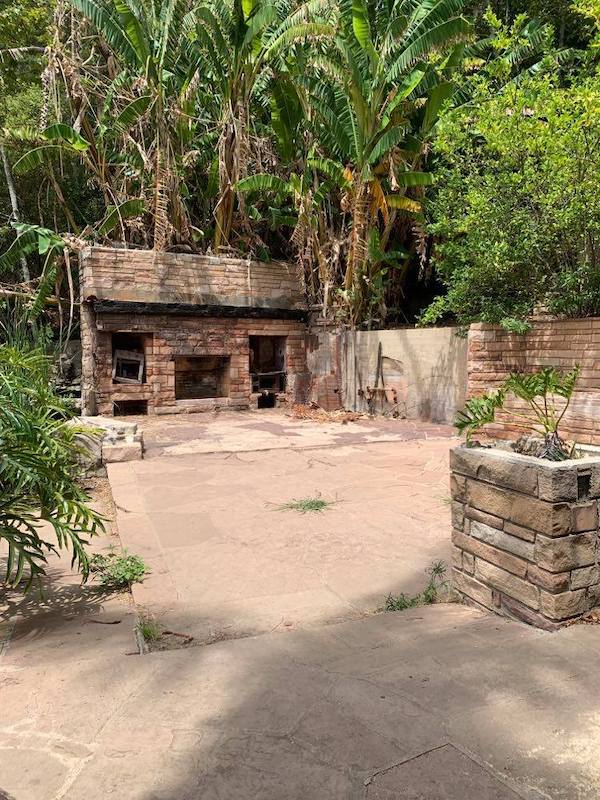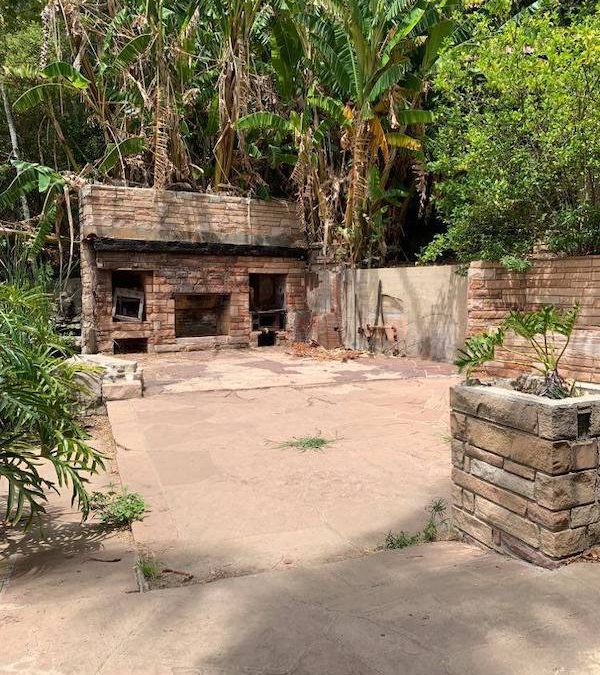A Tropical Forest in a Desert
Written by: Mahnoor Rahman
I was originally going to write this blog post about the ongoing survey I have been participating in at Circle X ranch but during these surveys I got the opportunity to go to Solstice canyon. I didn’t expect much from this trip but a simple introduction into the National Park but during our visit we ran into Lisa Roberts a member of the Roberts family who grew up in a home which was originally located inside Solstice Canyon. Her grandfather bought the majority of solstice canyon slowly. After his death NPS acquired the estate, including his beautiful home, which has tragically fallen to ruin due to fires burning through the area. While I didn’t get a chance to see much of the park Lisa walked with us to the home. She went through anecdote after anecdote telling us about all the little nuisances of the home. She showed us where her grandfather’s bedroom was and the reason for the strong sulfur smell in the area. She described how she helped protect the home once from a forest fire and how it stuck with her. She said her grandfather told her “If you’re scared you can’t stay” he had no room for fear in these situations.


While the experience only lasted a couple of hours it helped me build a connection with the National Parks that I didn’t have before. Archaeology as a field is usually about far off people in far off lands with no real ties but this is one of the first times that archaeology has a connection. The timeline didn’t feel so long ago but rather something closer to us and more human that affects people still alive and active today. I think I’ve learned from this experience the responsibility archaeology has not just to research the past but to preserve the past for generations.
Discover how ACE conservation and preservation efforts work by visiting us online.
